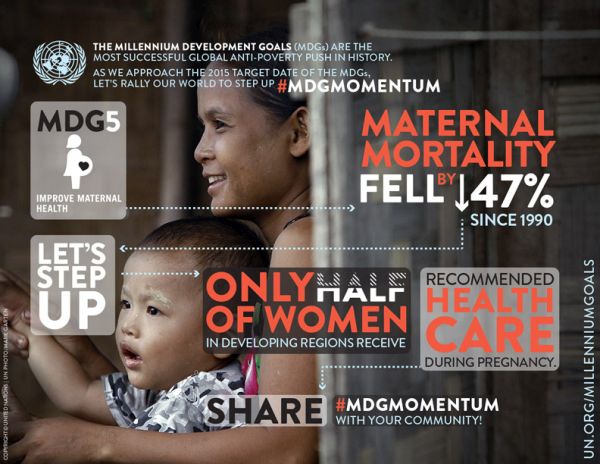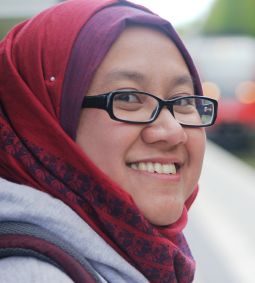Goal 5: Improve Maternal Health
With expertise gleaned from both professional experience and their studies in Germany, DAAD scholarship holders talk about the eight UN Millennium Development Goals. In an interview, Dr. Evita Hanie Pangaribowo speaks about redoubling efforts to improve maternal health.
“Behaviour must change”
Since finishing her doctorate at the University of Bonn, Evita Pangaribowo has been a Senior Researcher at the Center for Development Research, also at the University of Bonn. Pangaribowo, who is from Indonesia, plans to return to her home country later on to apply her new-found knowledge.
How is your current project related to the fifth Millennium Development Goal?
I’m researching hygiene, agriculture, and water quality in Asia and Africa, and how these affect people’s health and nutrition. All eight development goals are relevant here, because they’re all related. For example, improving health is closely linked to the goal of ensuring environmental sustainability: in developing countries, women and children are the ones who are mainly responsible for getting well water. Since water quality is often poor, this has direct consequences for the health of mothers, and of the whole family.
What is the best way to help?
The fifth Millennium Development Goal cannot be reached by more readily accessible health care alone. The problems are too complex. It is critical that woman recognise how to maintain and protect their health. Education plays the key role here.
Again and again, we hear about avoidable risks. What is meant by that?
Those are risks that are relatively easy and inexpensive to reduce, and successes are readily seen. An example: people who regularly use soap for body hygiene protect themselves from infection by communicable diseases. But the problem is to get people to change their behaviour. Mothers have to be educated about health, nutrition, and hygiene, so that they understand why it makes sense to wash their hands with soap. In this way, a simple measure reduces the risk of, say, diarrhoea, which is the second most common cause of death among children.
What is needed for this kind of education to succeed?
It is not only important to identify the problem. We also need to establish the image of a healthy, self-confident, and strong woman. Advice given with a raised index finger does not accomplish much. It’s necessary to create indirect communication strategies, which include all members of a community. Again to use soap as an example, Muslims wash their hands before praying. This becomes a ritual and is part of the religion, and the reasoning is easily understood and accepted. When the whole community is included in the educational process, members learn from each other. Behaviour changes are more easily accepted within communities, than when urged from the outside.
The Millennium Development Goal will not be reached by 2015. So what’s the next step?
Yes, we’re still quite far from reducing maternal mortality by 75%. But the rate has already been reduced by 45% from 1990, so that’s a start. We’re missing some of the data and evaluation we need to build future strategies. This is the only way to investigate the causes of the problems and communicate action plans. In Indonesia, for example, we’ve recognised that women from poor neighbourhoods don’t go to health centres because they’re too far away. So here, there’s an infrastructure problem. A possible solution: health centres could work together with traditional healers and also birth attendants/midwives from villages and educate them. This way, women could receive professional medical help in their own villages.
More information on the first UN Millennium Development Goal is available here







